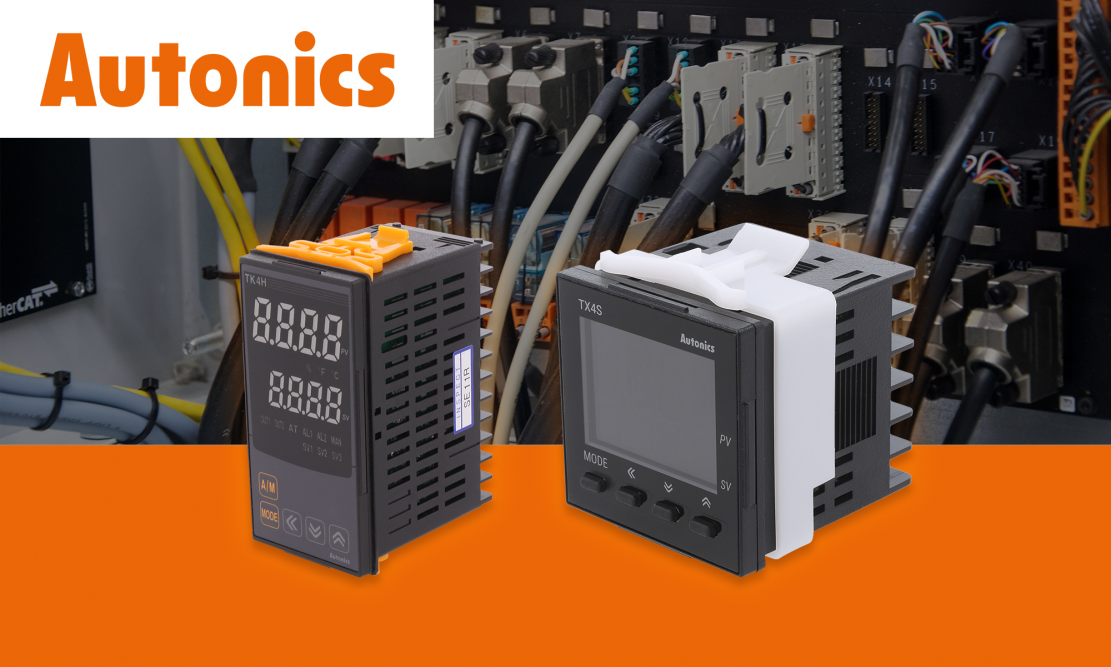It’s hard to disagree that these days household appliances, even the most basic ones, do almost everything for us. The washer-dryer will take care of the laundry, the food processor will prepare dinner, and the heat pump will ensure that the right temperature is maintained in our rooms. The same goes for hospitals, schools, large factories and public transport – wherever there is a need to control a process, machines and devices are equipped with electronic controllers.
It is thanks to these components that the fan in the car switches on to supply hot air, and the coal feeder feeds the eco-pea coal into the furnace when the room starts to get chilly. Finally, they are responsible for carrying out heat treatment with clockwork precision at a glassworks or steelworks, but also for maintaining the right environmental parameters in chemical laboratories.
A temperature controller is a solution that combines all of the above-mentioned applications together.
AUTONICS – KOREAN PRECISION THAT CONQUERS GLOBAL MARKETS
When discussing temperature control components, it is worth getting acquainted with a Korean company that has become a worldwide leading supplier of such devices. Autonics is a multiple award-winning manufacturer of solutions for industrial automation, which has become a global brand, competing with the industry giants thanks to its high-end products.
The history of controllers by this Korean manufacturer began as early as in 1977. A huge interest in the products led the company to open more branches in South Korea. Thanks to domestic success, it also expanded onto the foreign markets, including Japan, Indonesia, the USA and China. Today, the company has its branches in 12 countries around the globe, so it offers products and support to customers all over the world.
Apart from the already mentioned controllers, Autonics has a much wider range of automation solutions in its portfolio, including sensors, measurement systems or laser marking systems. We will now pay special attention to the above-mentioned temperature controllers and I/O modules.
DESIGN AND PRINCIPLE OF OPERATION OF A TEMPERATURE CONTROLLER
Temperature controllers (in their simplest version they are known as thermostats, while in a more advanced version they are called temperature regulators) are devices whose main task is to read and analyse temperature and then intelligently control the settings in order to obtain a set value. In terms of design, a controller is usually a small cube (most often with sides between 50 and 100 mm long) equipped with a digital LED or LCD display and a number of buttons for intuitive manual control. Enclosure versions vary depending on the application and mounting location. Alarm outputs are an additional option offered in advanced controllers. The sensor, made of materials characterised by appropriate conductivity and resistance to high temperatures, such as platinum, copper or nickel, is responsible for measuring temperature. As one can imagine, sensors will be used in different temperature ranges, depending on the material used. The operating temperature of the controller itself mostly falls in the range from -20°C to several dozen °C. Other sensors used in temperature controllers are thermocouples, thanks to which temperatures exceeding the limit of 1000°C can be measured. Due to the industrial applications of such devices, they are designed to operate in demanding workshop conditions. High-quality products are IP65 rated, providing a barrier against contaminants such as dust or liquid streams. As befits 21st century electronic devices, communication between the temperature regulator and the computer is seamless, so readings can be analysed and archived in real time.
As for the principle of operation, the role of the temperature controller is to transmit a signal to the actuator (for example, a heater or an air-conditioning unit) indicating that the temperature differs from the set value and needs to be adjusted. The heating or cooling system then switches on and runs until the controller’s computer signals again that the set temperature has been reached.
APPLICATION OF TEMPERATURE CONTROLLERS
Simple temperature controllers, as mentioned at the beginning of this article, are found in many everyday appliances. Autonics, as a leading manufacturer with many years of experience, offers controllers that are used in much more complex systems. The importance of tasks that they perform is evidenced by the fact that huge factories, such as glassworks or steelworks, cement plants, but also powerful conventional or nuclear power plants couldn’t do without them. In fact, temperature controllers are used wherever constant temperature maintenance or adjustment is required.
TK AND TX SERIES OF TEMPERATURE REGULATORS
Autonics has various models of temperature regulators in its portfolio. Below, we present two series that are new to the TME catalogue:
The TK series comprises high-quality PID controllers characterised by a very fast sampling cycle (up to 50 ms), with accuracy of ± 0,3%. Such a controller can be used to carry out both heating and cooling processes. The controller can be programmed both via the control panel on the enclosure and via a USB cable connection from a PC. The possibility to change the settings via the free DAQ Master software is a very convenient solution. The large LED backlit display facilitates reading and controlling the device even in dark rooms. Thanks to its compact design, the controller will fit in the limited space of any control cabinet.

Panel-mounted module.
The TK series of solutions helped reduce the size of the unit by 38% compared to previous models, while improving the speed of sampling cycles. The devices are available in several enclosure versions, thanks to which they can be applied in almost any configuration. In the event of a heater burnout, the TK series models protect the user by activating a pre-set alarm. It is also worth noting that the controller is suitable for both manual and automatic operation. The product is equipped with relay/SSR/analogue outputs.

TX controller with an alarm output.
The TX series controllers, similarly to those with the TK symbol, have a 50 ms sampling cycle and an equally high accuracy of ± 0,3%. The large and easy-to-read display and a slimmed-down enclosure (the rear part of the controller has been shortened by 30%) are their indisputable advantages. When it comes to programming the controller, the TX series also features DAQ Master software. The compact controller is equipped with the most important buttons for controlling the device, making the operation extremely intuitive.
ARIO MODULES BY AUTONICS
As already mentioned in this article, Autonics is famous for its many interesting solutions for automation. Thanks to the continuous research process, the company regularly introduces new products onto the market. Among these, not only the already discussed controllers, but also the input/output modules from the ARIO series are worth mentioning.
Why are the I/O modules by Autonics worth looking at? It is because they are compatible with DAQ Master, too, so no additional software is needed to control the modules along with the rest of the electronic solutions by Autonics. The modules are controlled via industrial Ethernet/Fieldbus communication, using either an industrial PC or a PLC. The ARIO series consists of a range of input/output, power, power supply and temperature modules. For more demanding applications, they can be expanded to include up to 64 modular units.

Thanks to the use of a hot-swap system, active module components can be replaced during operation without rebooting or shutting down the device. The ability to keep track of parameters and provide real-time diagnostics of both input and output signals will certainly not surprise anyone. Solid workmanship and robust, compact construction mean that I/O modules by Autonics will not let you down even over many years of operation in adverse conditions.














